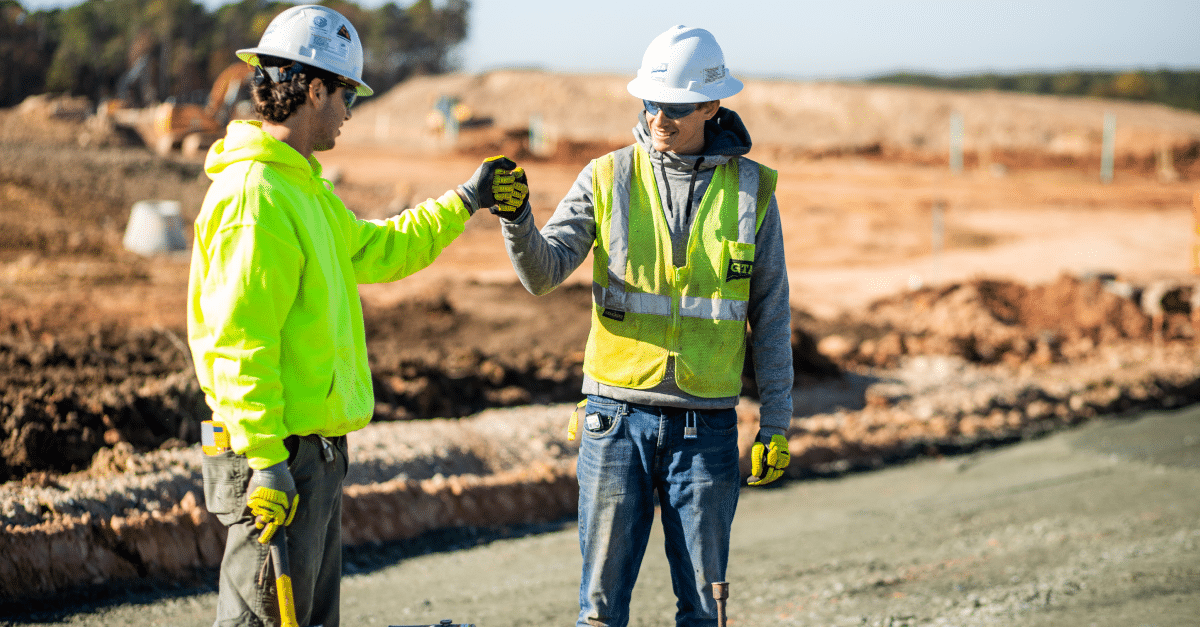Some Known Facts About Geotechnical Engineering For Construction Projects.
Some Known Facts About Geotechnical Engineering For Construction Projects.
Blog Article
The Facts About Geotechnical Engineering For Construction Projects Revealed
Table of ContentsGeotechnical Engineering For Construction Projects for BeginnersThe 5-Minute Rule for Geotechnical Engineering For Construction ProjectsSome Ideas on Geotechnical Engineering For Construction Projects You Need To KnowGeotechnical Engineering For Construction Projects Things To Know Before You Get ThisGeotechnical Engineering For Construction Projects for DummiesThe Single Strategy To Use For Geotechnical Engineering For Construction ProjectsAll about Geotechnical Engineering For Construction Projects
Principles and Technique of Ground Improvement. Ground Improvement Principles And Applications In Asia. Design evaluation in rock technicians.Cengage Learning, Stamford, 666 p. Atkinson, J., 2007. The auto mechanics of dirts and foundations. The Observational Method in ground engineering principles and applications.
Geotechnical Engineering For Construction Projects Fundamentals Explained
Lab and field screening plays a crucial duty in this process. By drawing out examples from the earth's subsurface and applying a collection of examinations, geotechnical engineers can forecast the practices of soil layers and examine their viability for various construction efforts. The essence of geotechnical design in civil engineering can not be overstated, attributable to several aspects: The initial step in any kind of geotechnical research study includes identifying the soil type at the building and construction site.
The structure acts as the bedrock of any kind of building task. Selecting the ideal foundation type is a decision that hinges on the comprehensive analysis provided by geotechnical design.

Geotechnical site examination is a crucial action in the planning and execution of any kind of construction task. It includes the collection and analysis of data connected to the physical residential properties of dirt and rock under a suggested building site. This details is crucial for the style and building of safe, secure, and sustainable structures.
The Ultimate Guide To Geotechnical Engineering For Construction Projects
, additionally understood as subsurface exploration, involves a series of tasks aimed at determining the dirt, rock, and groundwater conditions at a building website. The primary purposes are to identify prospective geotechnical hazards, evaluate the engineering residential or commercial properties of subsurface products, and offer suggestions for the layout and building of foundations, preserving wall surfaces, and various other structures.
The workdesk research study helps in determining possible geotechnical concerns and planning the subsequent fieldwork. This entails observing the topography, drain patterns, existing structures, greenery, and any type of signs of instability or erosion.
5 Simple Techniques For Geotechnical Engineering For Construction Projects
Shallow examination pits are excavated to straight observe and sample the soil and rock. This technique serves for studying the upper layers of the subsurface and recognizing near-surface dangers. Non-invasive geophysical approaches, such as seismic refraction, ground-penetrating radar (GPR), and electric resistivity tomography (ERT), are made use of to map subsurface problems and find anomalies.
Soil and rock examples accumulated throughout the area investigation are subjected to lab screening to identify their physical and mechanical residential or commercial properties. These tests supply essential data for geotechnical evaluation and style.
The key advantage of geotechnical site examination is guaranteeing the security and stability of frameworks. By recognizing the subsurface conditions, designers can develop structures and other architectural components that can stand up to the loads and ecological pressures they will certainly undergo. This minimizes the danger of settlement, subsidence, and architectural failure.
The Best Guide To Geotechnical Engineering For Construction Projects
This makes sure effective and safe building and construction techniques. Geotechnical site examinations are frequently required by constructing codes and guidelines.
This information is vital for project supervisors, architects, and professionals in creating reasonable schedules, spending plans, and contingency strategies. Geotechnical Engineering for Construction Projects. Skyscraper in a Coastal AreaIn a coastal city, a skyscraper residential building was intended on a website with presumed loosened sand down payments and a high water table. A comprehensive geotechnical investigation, including borehole drilling, CPT, and geophysical studies, was conducted
Geotechnical Engineering For Construction Projects Fundamentals Explained
Based on these searchings for, the foundation layout was modified to include deep heap foundations expanding into steady strata, and ground renovation methods, such as vibro-compaction, were executed to minimize liquefaction threats. This aggressive approach guaranteed the safety and stability of the building while preventing expensive post-construction remediation. Facilities you could try this out Advancement on a Sloping TerrainA major framework job, involving the building and construction of a freeway and bridges, was prepared on a hilly surface with steep inclines.

The Leaning Tower of Pisa (Italy), an iconic building wonder, is notorious for its unplanned tilt from significant geotechnical issues. The tower's structure was inadequately designed to take care of the soft, unsteady dirt underneath it, causing irregular settlement and its unique lean. Our globe is populated with excellent infrastructure projectsfrom looming skyscrapers to stretching bridgesall standing testament to the development of the numerous construction tools and techniques readily available.
Geotechnical engineering is a customized area within civil engineering that concentrates on studying the habits of planet materials. This branch digs deep their website right into the groundinvestigating just how the soil, rock, and groundwater at a building and construction site can influenceand be influenced bythe framework that we erect on and right into them. Before a single block is laid or a concrete structure poured, geotechnical engineers probe right into the earthgathering essential information regarding the site's soil structure, rock structure, and groundwater degrees.
Little Known Facts About Geotechnical Engineering For Construction Projects.

is a tool made use of to evaluate the integrity and load-bearing capacity of piles during installation, leveraging the principle of wave proliferation. It enhances building and construction efficiency by offering real-time examinations, thus making certain risk-free and efficient pile structures. One of the practical applications of geotechnical engineering involves making a decision and performing the right approaches for foundation building and construction.
Stack driving represents greater than the mere act of inserting architectural elements into the ground. On the contrary, it is a meticulously orchestrated procedure of moving a framework's lots past the less secure dirt layers see better to the surfacedown to the much more substantial strata that exist beneath. In the case of heap driving, consider how geotechnical engineers adeptly use this method to evenly distribute the structure's weight.
Report this page